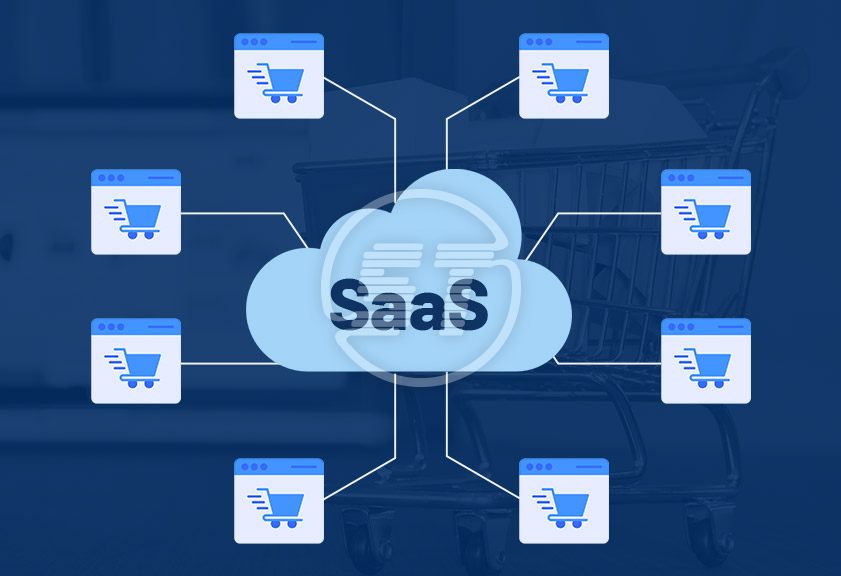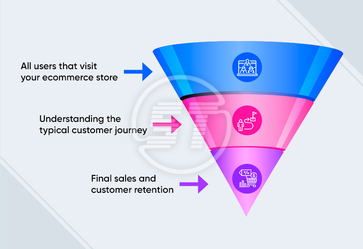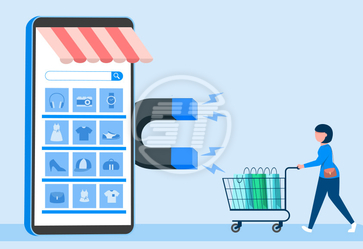Are you planning to scale your ecommerce store with a multi-tenant architecture?
Certainly, it is the fastest growing and reliable aspect of the ecommerce industry. But before opting for it, pay attention to a few basic and profound factors to build a successful SaaS solution.
Software as a Service (SaaS) based applications are growing across the world and large organizations have started using it. SaaS is a multi-tenant architecture that provides ease of working with complex yet organized structures.
It is giving manifold reasons to business owners to use the SaaS solutions for their businesses. SaaS architecture provides scalable ecommerce development at a reduced cost. Many big industry names are using SaaS based model and leading the market.
Let’s discuss more about SaaS based multi-tenant ecommerce development and its best practices in this article.
What is multi-tenant ecommerce development?
Multi-tenant ecommerce is a cloud-based architecture that allows multiple customers (tenants) to create their online store on a single platform. The tenants share the same instances of the store, yet their database is isolated in separate clusters. A centralized admin handles all the tenants by maintaining a common codebase and instances.
They are mostly subscription-based cloud solutions. The development and maintenance are cost-effective in a multi-tenant ecommerce structure then multi-vendor marketplace.
A few famous examples of ecommerce platforms which are providing multi-tenant ecommerce solutions are – Drupal, Aimeos, Bagisto, Magento, Shopify, Squarespace, etc. These platforms provide amazing features to build multi-tenant ecommerce websites.
Best practices for multi-tenant ecommerce development
When you develop a multi-tenant ecommerce solution, you should follow some practical steps to make the architecture more interactive and user-friendly.
Plan the multi-tenant development: When planning for the development, think of resource usage, estimated workload, security, and customer’s needs. You should check how many tenants' maximum you are going to cater, how much storage space per store will need, how often you will go for ecommerce platform updates, what about optimization and customization of the stores, domain routing, what data privacy and compliance guidelines your application should meet. And there can be more facets to look for before moving forward to the development process. This planning will help you to create a scalable solution.
Brainstorm on tenant management: The multi-tenant ecommerce solution should be able to cater to businesses with unique needs. There can be smaller clients who will need fewer resources and some clients with huge resources needs. You should make a centralized tenant policy management model to cluster everybody's needs properly. Using this model, you can decide to create groups of tenants and add or reduce resources and features to the groups.
Permit customization and third-party integration: The multi-tenant solution must have such APIs that allow users to do integration of tools as per their need and convenience. Tenants may need to add some functionalities to their store, such as their desired payment gateways, customer portals, additional security tools, etc. Give them an environment where they can enjoy the freedom of customization and integration.
Make sure application is industry standard and compliance-ready: A multi-tenant ecommerce should adhere to industry-specific guidelines, local laws, and security standards, such as PCI compliance and General Data Protection Regulation (GDPR) to provide a completely secure platform to all the tenants for business transactions. PCI and GDPR focus on privacy and security issues, which is a primary concern for a multi-tenant ecommerce store. So, make sure your SaaS multi-tenant solution is compliance ready. The best accessibility practices include the ecommerce store to be ADA and WCAG compliance.
Provide the localized tenant experience: When you are thinking of a global audience, providing local experience might be an issue. But for multi-tenant ecommerce, it is mandatory. Your SaaS ecommerce solution should support multiple languages, different time zones, and most importantly, the application should convert to the local currency.
Customer support is necessary: Customer support is important for SaaS-based ecommerce solutions just like any other application. There should be a customer portal with self-service features, a support ticket management system, and a knowledge base to resolve the tenants’ issues.
Service level agreement (SLA) with tenants: The SLA is a legal document that has all the legality about what services you will be provided to the tenants on your multi-tenant platform. It includes – extra features of the platform, new modules, new plug-ins, cybersecurity to the store, uptime of the website, software updates, isolation strategies, etc.
You should plan the SLA for your application based on:
Subscription – There should be separate agreements for different subscription plans.
Use of resources – Every tenant has a specific need of memory, CPU, and other resources. Identify the usage groups and make an agreement accordingly.
If your SaaS application is scalable, then no one will face any major issue on the above-mentioned facets. But legal documents ought to maintain to avoid any future chaos.
Design must be scalable: To create a scalable design, you must separate customers and isolate their database properly. The below three models can help,
Shared database – Identifier columns separate tenants’ information despite they share the database. Adding resources to these columns is easy in case of workload increase. This way, your shared database becomes scalable at any moment.
Dedicated database - All the tenants have their dedicated separate database. The separate DB reduce server complexity because tenants can customize their database as per their need.
Sharded database – In sharded database model, a new tenant can get the provision of the database into other tenants’ DB, or you can also provide them their own DB.
These are a few best practices to make your multi-tenant SaaS application scalable and flexible for users. Now let’s see a few benefits of SaaS based multi-tenant ecommerce solution.
Benefits of multi-tenant ecommerce development
A SaaS cloud-based ecommerce architecture is giving plenty of benefits:
Cost-effective: In multi-tenant development, tenants share resources, databases, and entire application, which make the structure less expensive. Furthermore, tenants are not additionally charged for maintenance and regular upgrades as it is included in the subscription fee.
Optimum efficiency of the resources: The multi-tenant architecture makes sure that all the tenants get proper storage space and resources to run their ecommerce business. Computing load of all the stores managed properly with complete database and resource planning, as discussed above.
Easy maintenance management: In multi-tenant architecture, whatever upgrade and maintenance are performed to the core of the application, and it gets applied to all the tenant stores. So, maintenance of every single store becomes easier.
Convenient third-party integration and customization: Multi-tenant SaaS solutions are highly customizable using the platform’s APIs, and tenants can integrate the third-party tools without seeking any permission.
Wrapping-up
The multi-tenancy architecture is an excellent way to build a SaaS cloud-based application. When you compare a single-tenant and multi-tenant architecture, it is apparent that the multi-tenant model is easy to maintain and faster to scale. In this growing ecommerce scenario, developing a multi-tenant SaaS solution is a desirable choice. Also, this model works for every business that is looking for a scalable solution.
Opt for a multi-tenant ecommerce development with proper planning of SaaS infrastructure, maintain a thorough tenant management documentation, and focus on cloud computing. Rigorous research and adequate planning result in amazing solutions.
Though the SaaS-based multi-tenant ecommerce development is complex, it is well organized and well-managed structure aids in growing business rapidly and without bound. If you are thinking of converting your traditional ecommerce store into a multi-tenant ecommerce SaaS application, you’re at the right place.
We are an international ecommerce expert partner of Aimeos!
We provide complete ultra-fast, scalable and secure SaaS-based multi-tenant Aimeos ecommerce development which is scalable for millions of tenants and billions of items. Not limited to this, we provide fully functional Aimeos store with full featured admin interface and permission handling, API first, multi channels, multi-currency, Elasticsearch, and more.
We are an official solution partner of Bagisto.
We can provide full-fledged and cost effective SaaS-based multi-tenant Bagisto ecommerce development available with unique business model, end to end payment integration, multiple channels, multi-currency, localization, access level control, tenant’s insights, automatic updates, SEO enriched shop, and more.
We can also help you to improve store performance and simplify regular maintenance.
Laravel ecommerce packages have been gaining popularity. Both Aimeos and Bagisto have been the best frameworks serving their own purposes. You can fulfil myriad tasks using multiple functions allowed by these Laravel frameworks. Based on the suitability, one can choose either of them. Both, Bagisto and Aimeos are best for small to medium and large size ecommerce store requirements with higher scalability and customizability.
We are also providing multi-tenant ecommerce development for other platforms including Magento, Drupal, Shopify, Squarespace, and more. As a full-service ecommerce development company, we can help you to scale your business continually with the complete flexibility. Get in touch with us at hello@skynettechnologies.com or submit the following request free quote form to know more about our ecommerce development services.


